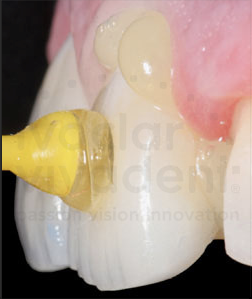e.max cement or bond. that is the question...
There is a very interesting thread going on right now on the ceredoctors.com message boards.
It discusses the rationale behind cementing or bonding e.max full coverage restorations. It sure is easier to cement rather than bond. We still need a dry field to cement any restoration but it is faster and requires less time dry to get the job done. We also need a more conventional prep with plenty of traditional resistance and retention form.
Now let me say that there is no definitive answer to the question of strength. It has been alluded to that there is not much of a clinical difference in terms of strength between bonding and cementing. The previously held beliefs that bonding was the best and led to the greatest strength of the restoration may well be true, but there may be less of significance to us as practitioners as previously thought.
How strong is enough? That’s a thought provoking question and one without a definite answer. So let me tell you how I approach this issue. Before I start I will say that I bond probably 95% of my e.max crowns. I just feel good about doing that. Many have minimal retention form and therefore bonding is a must. If I have a patient who, in spite of my best efforts is just very difficult to get perfect isolation or I have a prep with deep subgingival margins, then I consider cementing. In those cases I make sure I have a thick restoration and as I said previously adequate resistance and retention form.
It’s about providing the best service for that particular patient. It’s not about saving money or time at all. A poorly isolated prep and a compromised bond leads to a terrible outcome. Read this thread by clicking here and get some great insight from some great practitioners and make your own decisions. Provoking great discussion and thought is what it’s all about. It helps us grow as dentists and it’s good for our patients.




